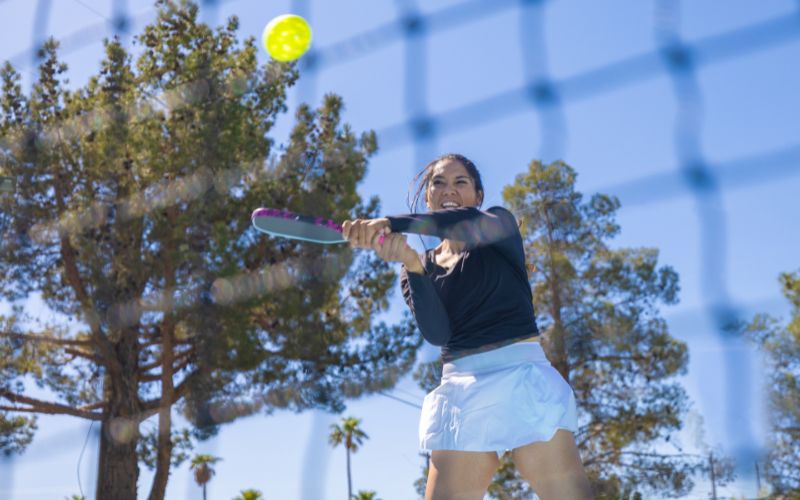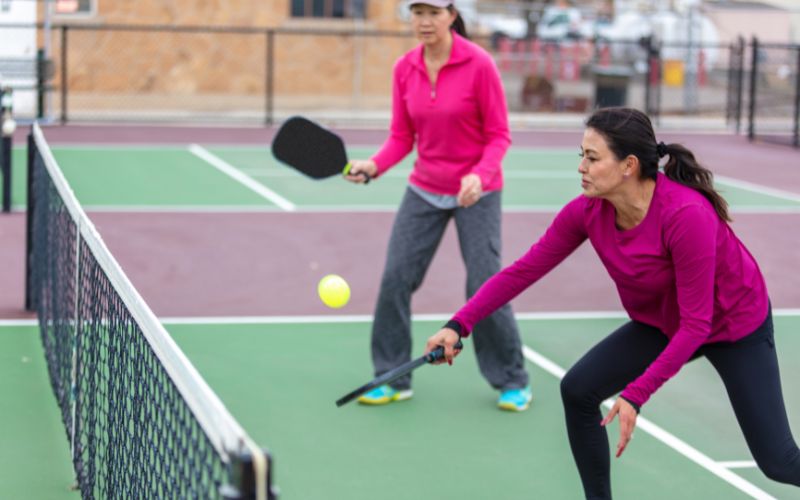Pickleball has gained immense popularity over the years, attracting players from various sporting backgrounds due to its fast-paced nature and easy-to-learn rules. One crucial aspect of mastering pickleball is understanding how to hold the pickleball paddle, especially when positioned at the net. The way you grip your paddle can significantly impact your performance, control, and power during the game. In this comprehensive guide, we will delve into the nuances of holding a pickleball paddle, particularly focusing on the continental grip at the net, paddle positioning, grip pressure, and common mistakes to avoid.
Understanding Pickleball Grips
Before we delve into the specifics of holding the pickleball paddle at the net, it’s essential to understand the various grips used in the game. Pickleball players primarily use three grips: the eastern grip, the western grip, and the continental grip.
Continental Grip
The continental grip is the most commonly used grip, especially at the net. To achieve this grip, hold the paddle as if you were shaking hands with it. Your index finger should be placed on the paddle face, forming a V-shape between your thumb and index finger. The continental grip allows for quick transitions between forehand and backhand shots, essential for quick exchanges and precise shots near the net.
Eastern grip
Often described as “shaking hands” with the paddle, the Eastern grip shifts the paddle slightly in your hand to allow you to add power to both your forehand and backhand shots. Basically, you rotate your hand slightly clockwise as a righty, or slightly counterclockwise as a lefty, to hold the third bevel instead of the second bevel of the handle. This grip provides a little leverage and positioning that will help you impart power and spin on the ball.
Paddle Position and Grip Pressure
Where to grip the paddle is crucial. Should it be by our side or in front of our face? Perpendicular to the shoulder line? Let’s simplify: the neutral position works best.
When positioned at the net, it’s crucial to maintain the correct paddle position and grip pressure to execute shots effectively. In your ready position on the pickleball court, you need a paddle angle allowing you to handle shots from all directions. Aim for a 10 or 11 o’clock position (or 2 or 1 o’clock if left-handed) to cover both forehand and backhand sides effectively. This semi-backhand stance provides quicker reaction time near the net, allowing for both backhand shots and the option to switch to a forehand. Avoid over-rotating to the 9 o’clock position (or 3 o’clock for lefties) to maintain versatility in your shots.
Maintain a firm grip on the paddle handle, but avoid gripping it too tightly. Grip pressure should be firm enough to maintain control over the paddle but relaxed enough to allow for wrist action and flexibility during shots. Finding the right balance of grip pressure is key to generating power and accuracy in your shots.
Holding it in front of you with a slightly firm grip feels comfortable and preferred by many players. Placing the hand on the other end adds balance and keeps the paddle light. This remains true at the net, where readiness for overhead smashes is key.
Ready Position and Body Alignment
In pickleball, the ready position is fundamental to successful execution and quick reaction times. When at the net, stand with your knees slightly bent, and your body weight distributed evenly between both feet. Keep your paddle head up and your body facing the net, ready to react to incoming shots.
Maintain a neutral position with your paddle handle at about belly button height. This position allows for quick adjustments and efficient shot-making, whether you’re hitting forehand or backhand shots.
Executing Shots at the Net
When positioned at the net, you’ll encounter various shot opportunities, including dinks, volleys, and power shots. Understanding how to hold your paddle correctly can make a significant difference in your ability to execute these shots effectively.
Forehand and Backhand Shots
For forehand shots, maintain a continental grip and keep your wrist firm but flexible to generate power and control. Rotate your body slightly to the side to open up your hitting zone and maximize surface area contact with the ball.
On the backhand side, transition smoothly between the forehand and backhand grips, ensuring that your index finger remains in contact with the paddle face. Use your wrist to snap through the shot, generating power and accuracy while maintaining control over the ball.
Twelve O’Clock Position
Numerous players opt to hold their paddle in what’s commonly known as the Twelve O’clock position. In this stance, the edge guard points towards the opponent, essentially representing a neutral stance. Standing upright, you hold the paddle without exposing its face to your opponent.
This stance can be advantageous for executing backhand shots. However, it may impede your speed at the net, particularly when attempting shots towards your left or right shoulder. The delay in transitioning the paddle from the Twelve O’clock position to strike higher shots can compromise the effectiveness of your volley.
Nine O’Clock Position
A prevalent technique for paddle grip involves holding it at the Nine O’clock position. Here, you form a triangular shape with your elbow while positioning the paddle in front of your body. This triangular formation is often referred to as the “chicken wing.” With this stance, returning volleys to your left side (for right-handed players) and right side (for left-handed players) becomes more manageable. It proves to be an effective posture for executing backhand shots. However, it exposes your chicken elbow, leaving you vulnerable to shots directed there and hindering your ability to play them effectively.
Avoiding Common Mistakes
Many players, especially those with a tennis background, may struggle with certain habits that are detrimental to their pickleball game. One common mistake is gripping the paddle too tightly, which restricts wrist action and generating power in shots.
Another common error is positioning the paddle too far back or too close to the body. This can lead to mis-timed shots and poor shot selection, especially near the non-volley zone line. Maintain a balanced paddle position, with the paddle head slightly above the wrist to allow for a full range of motion during shots.
Conclusion
Mastering the art of holding a pickleball paddle at the net is essential for competitive play and overall enjoyment of the game. By understanding the nuances of the continental grip, paddle positioning, and shot execution, players can elevate their performance and compete at their best.
Remember to practice regularly and pay attention to your grip, positioning, and shot selection. With dedication and attention to detail, you can improve your pickleball skills and enjoy greater success on the court.
Whether you’re a beginner or an advanced player, honing your paddle-holding technique will undoubtedly enhance your pickleball experience and contribute to your overall proficiency in the game. So, grip your paddle with confidence, position yourself at the net, and let your skills shine on the pickleball court!






